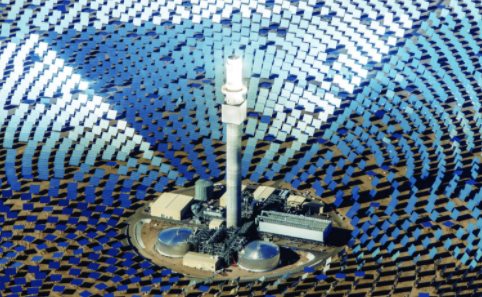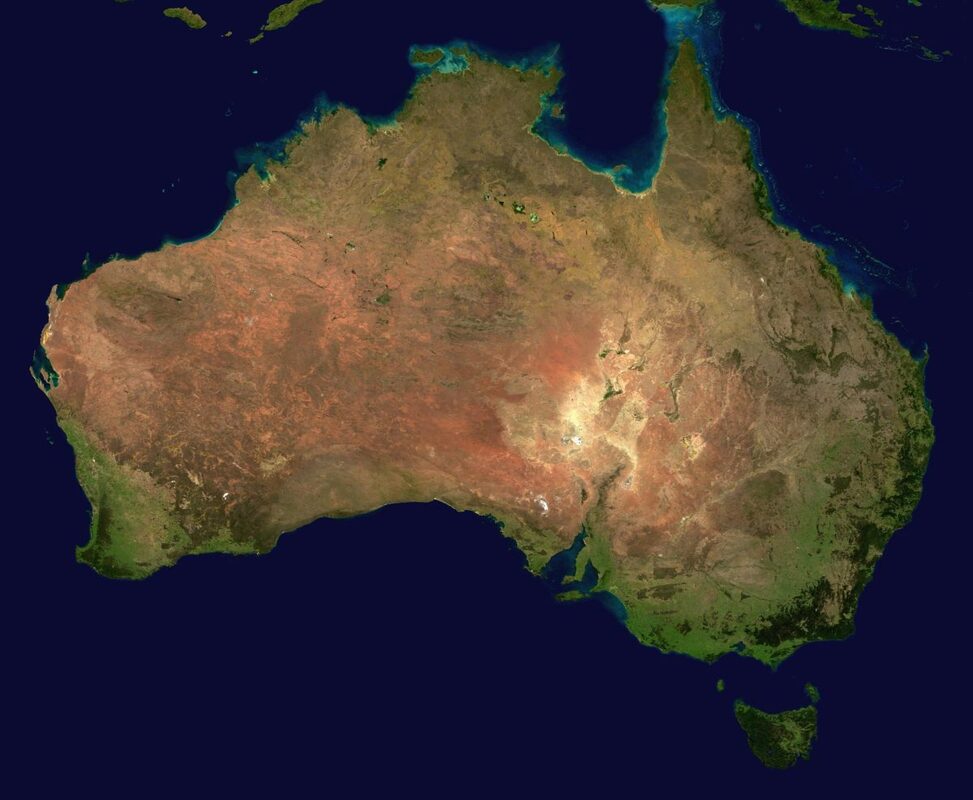|
If the government was serious about energy policy for the country as a whole and the need to cut emissions then Climate Emergency Action Alliance–Vote Planet has the following suggestions for how to spend $600 million:
By David Lughermo
0 Comments
By Jane Edwards Just months ago in Australia pre COVID-19, it would have been unthinkable that:
We are seeing both use of ‘command and control’ (centralising powers to deal with an emergency) alongside massive public spending focused on the common good with funds that were not supposed to exist. Both are an anathema to a neoliberal government. The curtain has dropped, and we can see what governments are actually capable of doing if they want to. It’s from a crisis that opportunities arise and that long term change is most likely to occur. We can’t blow this opportunity. It’s not enough to just say the standard operating model is wrong - what are the concrete ideas we have to replace the neoliberal operating system that puts corporate profits ahead of the common good? The LNP’s 'stimulus' package for coming out of COVID-19 will most likely focus on pumping more public funds into corporations and sectors that donate to the party in the name of jobs, including mining and fossil fuels. There is evidence that mining firms are taking the COVID-19 opportunity to increase automation - there go the jobs. Fossil fuel extraction is a dying sector and we would only be investing Australia’s future in stranded assets. We are also seeing environmental destruction ramp up under the cover of COVID-19. In Victoria alone we’ve seen the extension of agreements that exempt the logging industry from conservation laws for 10 years and the onshore gas moratorium rolled back. But what should the government’s response look like, understanding that the impact of COVID-19 will likely take years to recover from and could be more serious than the Great Depression when unemployment reached 30%? Once isolation is over, a massive fiscal stimulus will be required. Where would the funds come from? Our government, with the support of Parliament, can create those funds digitally. Yes, federal governments with floating sovereign currencies can do this and all they need is approval of Parliament/Congress. The Australian $80 billion-plus released so far for COVID-19 was created this way but the amount was then traded in government bonds. Federal bonds don’t raise capital - they are not a loan to the government. At the federal level, the government creates the dollars required and then gets investors to accept the liability of those dollars for the promise of a financial return. Adding money to the economy this way should not cause inflation unless the economy is approaching full employment, and in the context of a stimulus post COVID-19 there would be plenty for that money to do - this is at least the premise of Modern Monetary Theory (MMT). Links below provide relevant background to MMT. The risk of inflation is irrelevant when contrasted with the risk of no fiscal stimulus - and inflation is easily controlled for using taxes and interest rates. As radical as this may sound, the stimulus should put the wider common good at the centre. As such, the response should be a climate emergency investment package because the climate emergency is the ultimate crisis we face, and the climate emergency requires a ‘wartime’ mobilisation effort. And there would also be likely support for such a response. The Australia Institute recently found that two thirds of Australians (66%) agree that Australia is facing a climate change emergency and should take emergency action, as was taken during the world wars. A true climate emergency response if implemented globally is one that could stop and then reverse global warming to ultimately restore a safe climate. Such an effort at a national level would create:
What should the climate emergency response and stimulus look like?
As to the details - these have been worked on and modelled by groups such as Beyond Zero Emissions, Zero Carbon Britain and others. Plans exist. A ‘negative carbon Australia’ is possible. The climate emergency package can also look however we want it to - based on our priorities and the key performance indicators we put in place to guide our society. For example, how central is equity? Education? Etc. And why would Australia go out on a limb to do this when it can’t save the planet alone? Because Australia has vetoed stronger action on climate for over 20 years. Previously we stood in veto with the US and now stand in proud veto with Russia and Saudi Arabia. If Australian coal and gas exports were taken into account, we would be in the ranks of the top emitters globally, and we have the equal highest per capita emissions. Australia now needs to lead. Yes, the likelihood of the proposed climate emergency action under the current government is next to laughable, but the alternative is giving up on a safe planet. We can’t let the Aus government use this opportunity to further entrench neoliberalism and prioritisation of corporate profits, corruption, and authoritarian lawmaking. We have to be louder than the lobbyists and loud in the media via letters to the editor, op eds etc. We need to contact our MPs and share this vision with them. Are you lucky enough to be able to sit at home in isolation? Use at least some of your time in isolation to give our future a chance. Links Modern Monetary Theory, COVID-10 and the economy. Dr Steven Hail We're in 'emergency mode' for coronavirus — we can do the same thing for climate. Margaret Klein Salamon, Things we can learn from COVID-19 to help with the climate emergency, The Fifth Estate A Green Stimulus to Rebuild Our Economy: An Open Letter and Call to Action to Members of Congress VIDEO - Prof Stephanie Kelton - The Deficit Myth - 2020 Harcourt Lecture - 15 Jan 2020 Australians Want Gov. to Mobilise Against Climate Change Like a ‘World War’, the Australia Institute Today is more than a new year - it will need to be the beginning of a new era in climate campaigning1/1/2020 By Philip SuttonToday is the first day of 2020 and I think 2019 needs to be the last year of a thirty year era of climate campaigning and action. Across the country fires are raging, with a scale and intensity that confirms that Australia and the world is now living in the early stages of truly catastrophic climate change. Climate disaster has become a now issue. It is not surprising that the Oxford Dictionaries selected "climate emergency'" as the 2019 word of the year. Across the globe people have spent the last 30 years incrementally working to reduce emissions in the hope that we can stop the warming before it becomes dangerous. But after those 30 years we have reached the point where the climate IS clearly dangerous, right now (and worse and worse is in the pipeline if current trends are allowed to continue). The climate movement needs to rediscover the climate issue afresh, as it actually is now (and not as we have became habituated to thinking about it over past decades). Let's work through the logic given the situation we are in, at the start of 2020. The world is dangerously too hot now. Because of current climate change impacts, much of the doubt about the reality of climate change is evaporating. More and more people are beginning (very reasonably) to demand that governments take action to protect them –immediately. Two scenarios could unfold from here. With fires, droughts, heatwaves on land and in the seas, storms, floods etc. battering people and ecosystems, the cost of coping with impacts and recovering and taking adaptive action to lessen the impacts is mounting so rapidly that it would be very easy for societies to switch most of their 'climate' expenditures into dealing with here-and-now impacts. What might this world start to look like? Water shortages will be dealt with principally by investing in desal plants. Forests and woodlands will be too dangerous to live near and they will be mercilessly control-burned or perhaps even cleared. Agriculture will need to be shifted as much as possible into controlled environments (ie. into vast buildings). Across the globe, anyone too poor to invest in such controlled environments will be abandoned (ie. a large percentage of the rural poor and indigenous people living on country), Sea walls will be built, or deltas and coasts abandoned. Marine and terrestrial natural ecosystems will be abandoned. Borders will be closed and people will close their hearts to the struggling and the dying. Wars and insurrections will become more and common in areas too poor to adapt, and quite possibly beyond, and the culture of global cooperation will die. But remember that this is a world that is 'dealing ' with climate change and investing huge amounts very urgently in the process. Is there a better scenario that we could bring into being instead? What might things look like if enough communities around the world decide to do two big things simultaneously, that is:
What has to be done to achieve the second point? If the earth is dangerously too hot now it means that:
Do we know how to carry out any of these steps? Zero emissions: Over the last 50 years a huge amount of work has been put into developing zero emissions energy technologies and this effort has finally delivered technologies that are cost competitive against fossil fuels. So the main things we need to do now is mobilise the political will to urgently close down emissions generating energy systems (covering the use of coal and gas and oil). We also need to accelerate the development and deployment of zero emissions technologies across all the other sectors of the economy. While we absolutely must adopt zero emissions technology at emergency speed, doing so will result in cleaning up the air in regions that burn a lot of coal. This necessary clean-up process will remove particle pollution that has a net cooling effect (lowering the warming effect of coal burning). So, by itself, going to zero emissions (which we must do) will by itself raise the global temperature, once-off by about half a degree. So something more needs to be done. Full scale CO2 drawdown: The earth can be cooled (eventually) by taking all the excess CO2 out of the air. The lowest cost CO 2 capture and storage technologies depend on photosynthesis-driven biological systems – but these systems cannot be scaled enough to deal with all the CO2 that has to be taken out of the air. So additional physical/chemical methods will need to be developed that are affordable at the necessary scale. We know that full-scale CO2 drawdown could take many decades or even hundreds of years to complete. So the cooling effect of the drawdown strategy will not be strong enough for a long time – meaning that massive damage could be done to human societies and natural ecosystems and biodiversity in the meantime. Direct cooling using solar reflection methods. It is already known that the earth can be cooled back to the pre-industrial level at relatively low direct financial cost using solar reflection methods – and the target temperatures could be reached in just a few years. What is not known is whether this can be done with clear environmental/social net benefit globally (ie. would damaging side effects outweigh the direct benefits?). Clearly solar reflection methods should not be used if the net environmental/social benefit is not positive. But given the staggering social and ecological damage that will be done if temperature relief is not delivered very fast indeed, it seems like it would be highly prudent and ethically compelling to immediately ramp up research and development aimed at creating net beneficial solar reflection methods. What does our new situation mean for action and activism? We need to commit to a maximum protection approach to climate action and therefore be clear about:
We need to bring the urgency of real and timely protection to bear on climate campaigning. We can no longer approach climate campaigning largely via a string of drawn out limited target campaigns. We have to press governments to deliver a climate emergency action package that covers “everything”:
Ideally we would want the national government to take the lead from the start and to mobilise the country around this action program. But for practical purposes the current government is best understood as “the fossil fuel industry in government”. And even if Labor won the next federal election, its culture is currently focused on trade-offs and “doing a bit of everything, good and bad, fairly slowly”. Instead, for our immediate action, we need to look a bit further down the government hierarchy to find the critical next focus for action. Between 2016 and 2019, 83 local councils passed climate emergency declarations in Australia (and over 1000 globally). This process needs to be extended to more councils to build the community base, and extended to cover the adoption of an effective action program. But the big qualitative shift for 2020 needs to be to get a number of state governments to declare a climate emergency and adopt the action program described above. This process focusing on the states and territories began on 16 May 2019 when the ACT Legislative Council declared a climate emergency and the potential was further indicated on 25 September 2019 when the South Australian Legislative Council passed a motion calling for a declaration of a climate emergency. We need to be practical, recognising that the fossil fuel industry has its claws less securely into the body politic in some states and territories more than others. You can see this with the ACT, South Australia and Tasmania. There is also potential in NSW and Victoria. If these two big states could be got over the line then the country would really start to shift. Australia is a hybrid polity – part democracy, part monetocracy. To shift Victoria and NSW we will have to convince a large segment of the business community that their wellbeing doesn’t depend on following the interests of the fossil fuel industry, quite the opposite in fact. Building a powerful business alliance against the fossil fuel industry is not a crazy idea. In the 1970s and 80s the mining industry took on the manufacturing industry to press for the elimination of import tariffs. The manufacturing industry was the Goliath with 25% of the business dollars in the economy and the mining industry was the David controlling only about 5% of the business dollars. But the mining industry was eventually able to build an alliance that controlled more than 25% of the dollars in the economy and the alliance together with some skilful strategising rolled the manufacturers and got the tariff change they wanted. The fossil fuel industry in Australia is still a minority economic force controlling less than 10% of the business dollars. But the rest of the economy is not yet fully aware that its interests do not lie with the fossil fuel industry. A campaign to get the NSW and Victorian governments on side for a climate emergency program will depend on mobilising both the community and business around a climate emergency action demand.. And doing both these things will depend on getting support across the political spectrum. Already there are signs that the Liberals and Nations are facing very real internal tensions over the climate issue. The climate emergency campaign began in Australia in 2016 and was created by grassroots climate activists. In the 3 years since then the campaign has built momentum globally, culminating in the passage of a climate emergency motion by the European Parliament on 28th November 2019. The challenge for 2020 is for all of us climate activists to do what we can to get the mainstream climate movement to come at the climate issue afresh, acknowledging that the strategies of the last 30 years are past their use-by date. Now that we are living in the early stages of catastrophic climate change, we have to pull off a massive, urgent and improbable climate rescue. That will require new thinking and new action.
|
AuthorsBloggers on this page include Adrian Whitehead, Philip Sutton, Bryony Edwards, Andrea Otto, David Lughermo. Categories
All
Archives
July 2022
|



 RSS Feed
RSS Feed
